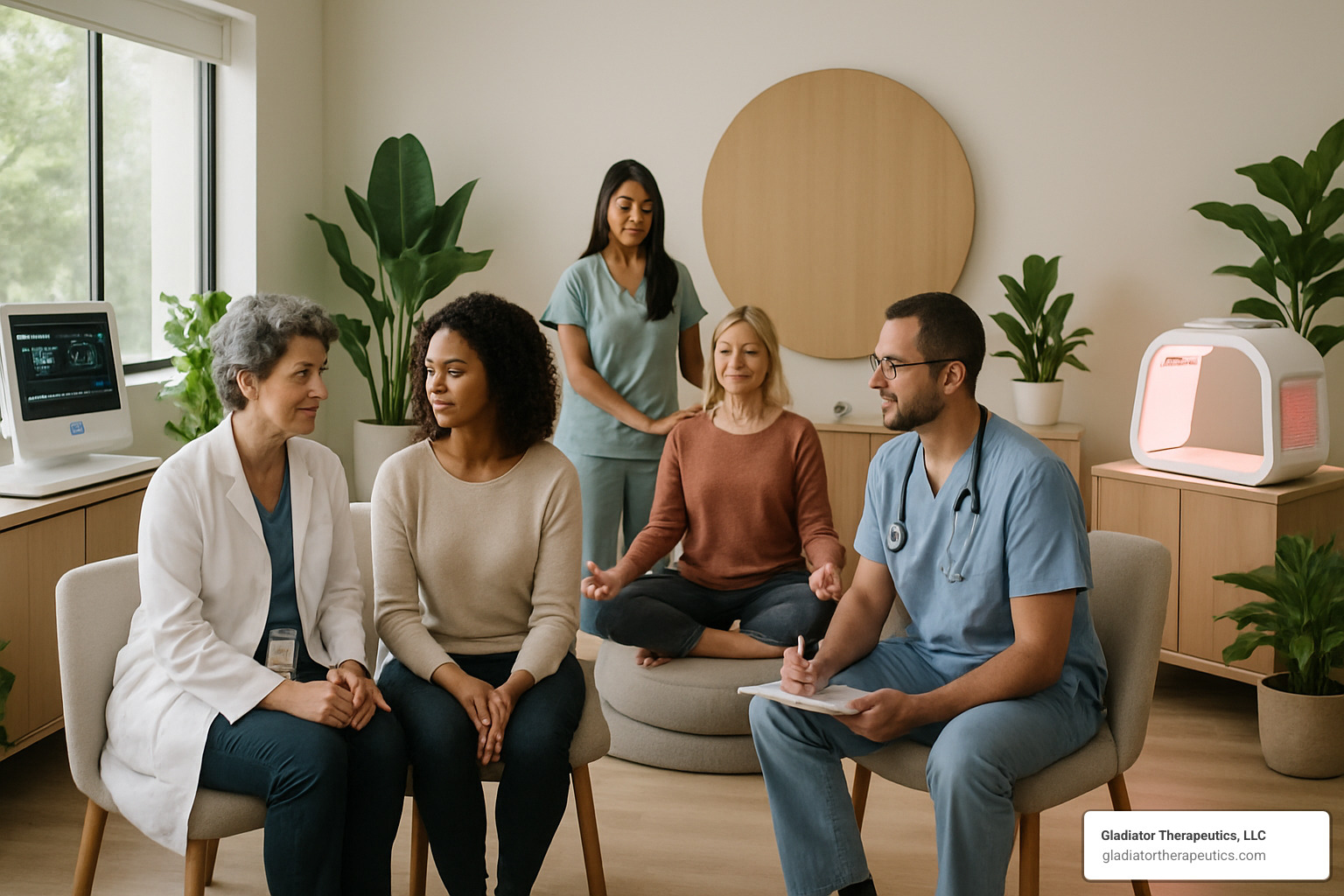October 14, 2025
Creating a Parkinson’s-Friendly Home Environment
Living with Parkinson’s disease presents unique challenges that extend far beyond medical treatment. The home environment plays a crucial role in maintaining independence, safety, and quality of life for your loved ones who suffer from this condition. Simple modifications can significantly reduce fall risks, improve daily functioning, and provide the comfort needed to navigate everyday activities with confidence.
Creating a Parkinson’s-friendly environment doesn’t require major renovations or expensive equipment. Most adaptations are straightforward changes that address the specific motor and mobility challenges associated with Parkinson’s disease. From removing tripping hazards to optimizing storage solutions, these modifications can make a profound difference in daily life.
General Home Safety Essentials
1. Clear Pathways
The foundation of a safe home environment starts with unobstructed walkways. Remove all clutter, particularly throw rugs and low-lying objects, to create clear paths throughout your home. These seemingly minor obstacles become significant fall hazards for individuals with Parkinson’s disease, where balance and coordination may be compromised.
2. Enhanced Lighting
Proper illumination is critical for preventing accidents and improving visibility. Make sure that every area of your home is well-lit, or can be with the switch of a button. There should be few to no dark corners that could hide potential hazards. Install nightlights in hallways and bathrooms, and consider touch or sound-activated lights that don’t require fine motor skills to operate.
3. Stable Furniture Solutions
Securely anchor all furniture to prevent tipping or sliding. Choose chairs with sturdy armrests positioned at an appropriate height to make standing easier. The right furniture height allows feet to touch the floor when seated, providing better leverage for standing up independently.
Kitchen and Dining Adaptations
4. Accessible Storage Systems
Store frequently used items, including food and utensils, between waist and chest height. This positioning eliminates the need for dangerous reaching or bending, which can compromise balance and increase fall risk. This is especially important for older sufferers of Parkinson’s disease.
5. Easy-Grip Tools and Utensils
Replace standard utensils with adaptive versions featuring easy-to-grip handles. Choose knives and cutting tools that require rocking motions rather than sawing, which can be easier to control with tremors or reduced fine motor skills.
6. Appliance Modifications
Tie fabric strips or ropes to appliance handles on refrigerators and dishwashers to make them easier to open. This simple modification reduces the grip strength required for daily tasks. Remember to never store cooking items above the stove to prevent burns from reaching over hot surfaces.
Bathroom Safety Modifications
7. Support Systems
You can install grab bars in strategic locations, particularly in the shower and near the toilet. These supports provide stability during movements and help prevent falls in one of the home’s most hazardous areas.
8. Non-Slip Surfaces
Add non-slip strips or mats to shower and bathtub floors to improve traction. Wet surfaces pose significant risks for individuals with balance issues due to Parkinson’s.
9. Seating and Elevation
Provide a shower chair or bench with back support to reduce fatigue during bathing. Consider replacing standard toilets with elevated versions, or add raised toilet seats to make sitting and standing easier and safer.
Bedroom and Living Area Improvements
10. Bed Accessibility
Adjust bed height so feet can touch the floor when sitting on the edge. Install bed poles or side rails to assist with getting in and out of bed independently. Keep essential items like flashlights and phones within easy reach on nightstands.
11. Strategic Handrail Placement
Install handrails along hallways and on both sides of staircases. These supports provide continuous assistance when moving throughout the home.
12. Assistive Technology Integration
Strategically place assistive devices such as medication organizers, adaptive computer mice, and other tools that simplify daily tasks. Consider keeping a bedside commode nearby for nighttime use to reduce risky trips to the bathroom.
Accessibility Improvements
13. Doorway Modifications
Widen doorways to a minimum of 36 inches to accommodate mobility devices and provide easier passage. This modification prevents the need to navigate tight spaces that could lead to falls or getting stuck.
Gladiator’s SemiCera® Technology for Parkinson’s Treatment
While home modifications address environmental challenges, innovative therapeutic technologies like Gladiator’s SemiCera® Technology offer additional support for Parkinson’s disease management. This non-invasive treatment provides several therapeutic benefits that align with the underlying mechanisms of Parkinson’s disease.
The technology stimulates healing processes while preventing tissue deterioration. It increases mitochondrial function — a crucial factor in Parkinson’s pathogenesis — and improves blood flow and tissue oxygenation. Additionally, its anti-inflammatory effects may help slow disease progression by reducing neuroinflammation.
These benefits make Gladiator’s SemiCera® Technology a potentially valuable adjunct therapy for improving motor performance and supporting overall cellular health in Parkinson’s patients. The non-invasive nature of this treatment addresses both motor and non-motor symptoms by targeting underlying cellular functions.
Enhancing Quality of Life Through Smart Home Design
Creating a Parkinson’s-friendly home environment represents a proactive approach to managing this challenging condition. These modifications work together to reduce fall risks, maintain independence, and provide the support needed for daily activities.
The combination of environmental adaptations and innovative therapeutic approaches like Gladiator’s SemiCera® Technology offers a comprehensive strategy for improving quality of life. With appropriate modifications and treatment support, individuals with Parkinson’s disease can continue living safely and independently in their homes for longer periods.
For those seeking additional therapeutic options, check out Gladiator Therapeutics’ innovative medical devices that might complement your home safety modifications and overall treatment plan.

